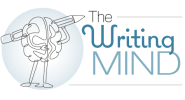Evidence-based guidelines, one of the hallmarks of nursing practice, are a tool that helps ensure patients achieve optimal outcomes. Guidelines also can be a tool for nurse authors, helping them achieve the goal of publication and dissemination of their work.
I was reminded of this by the publication of “PRISMA 2020: An updated guideline for reporting systematic reviews” earlier this year. Originally published in 2009, the updated guideline includes a 27-item checklist to help authors prepare their manuscripts.
About guidelines
Guidelines provide a road map for reporting results for different types of projects. They help ensure information is presented in a way that facilitates readers’ ability to understand your work and evaluate how it fits with their practice. Many of these guidelines, often available in multiple languages, include checklists for assessing different sections of a manuscript.
Here are examples of guidelines for different types of projects:
- Case reports: CARE (CAse REport Reporting Guidelines)
- Economic evaluations of healthcare: CHEERS (Consolidated Health Economic Evaluation Reporting Standards)
- Randomized clinical trials: CONSORT (CONsolidated Standards Of Reporting Trials)
- Systematic reviews and meta-analyses: PRISMA (Preferred Reporting Items for Systematic Reviews and Meta-Analyses
- Qualitative research: SRQR (Standards for Reporting Qualitative Research)
- Quality improvement projects: SQUIRE 2.0 (Revised Standards for Quality Improvement Reporting Excellence).
Some publications require authors to use reporting guidelines for their manuscripts, and peer reviewers may use them to evaluate your work.
Using guidelines
Check the author guidelines to see if a publication you’re targeting for your manuscript requires you use a specific guideline for reporting your work, then go to the corresponding website and download what you need. Use the guideline to craft your article.
Even if a publication doesn’t require you to follow certain guidelines, you can still use them to organize and evaluate your manuscript before submission, which may improve your likelihood of acceptance.
If you’re not sure which guidelines are best for your project, visit the website for the EQUATOR (Enhancing the QUAlity and Transparency Of health Research) Network (equator-network.org), which includes a searchable database of reporting guidelines as well as a flow chart and online wizard for determining which are the most appropriate for your article. EQUATOR also includes information about the most commonly used guidelines.
Guideline example
Rycroft-Malone and Burton provide an example of a description of an intervention that an author might write without consulting any reporting guidelines:
The new dietetic referral system included a nutritional screening assessment, which was completed by ward staff as the basis for prioritizing patients. Referrals were then coded as urgent, important, or routine, and managed by the service administration staff.
The SQUIRE 2.0 guidelines state that the intervention must be described in sufficient detail that others could reproduce it and should include specifics of the team involved in the work. With that guidance in mind, the author can improve the text:
The new referral system included a screening assessment (see Table 3), which registered nurses completed as the basis for prioritizing patients. The nurses coded referrals as urgent, important, or routine. Service administration staff then managed the referrals. All registered nursing staff completed two hours of education on how to complete the screening assessment, which included a test of reliability (threshold 90%). To promote successful implementation:
- A working group (which included members of the unit team who would be completing the screening) developed the assessment.
- The screening assessment was embedded within the electronic health record for all patients admitted to the unit.
Monthly audits of the timely completion of screening, referrals, and patient outcomes were provided and shared with staff to support ongoing review and development of this quality assessment.
The revised text better meets SQUIRE 2.0 criteria.
Writing toolbox
Reporting guidelines can be a valuable tool in your writing toolbox. Use them to improve the likelihood that your article will be accepted for publication.
References
Page MJ, McKenzie JE, Bossuyt PM, et al. The PRISMA 2020 statement: An updated guideline for reporting systematic reviews. PLOS Medicine. 2021;18(3):e1003583. doi:10.1371/journal.pmed.1003583
Rycroft-Malone J, Burton C. Reporting the quality improvement or evidence-based practice project. In: Saver C, ed. Anatomy of Writing for Publication for Nurses. 4th ed. Indianapolis, IN: Sigma Theta Tau International; 2021; 205-14.


Whether you’re considering your first or your 50th publication, want to contribute to your organization’s newsletter, or crave to be a better communicator online and in print, I hope you’ll find what I write helpful. The nurse publishing colleagues I’ve learned from over the years (many of whom are contributors to my book) may not be listed by name, but I’m grateful for their willingness to share. In that spirit, I’m looking forward to sharing with you! If you have feedback, feel free to email me at csaver@healthcommedia.com.



















